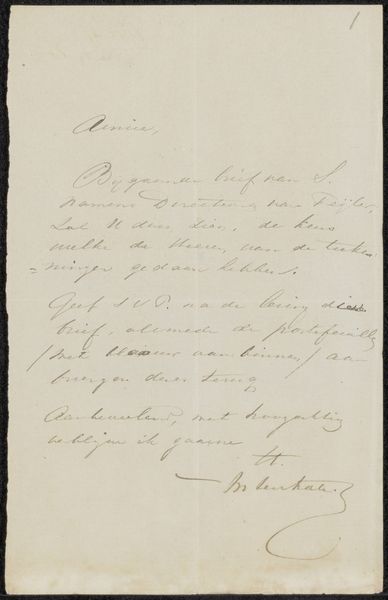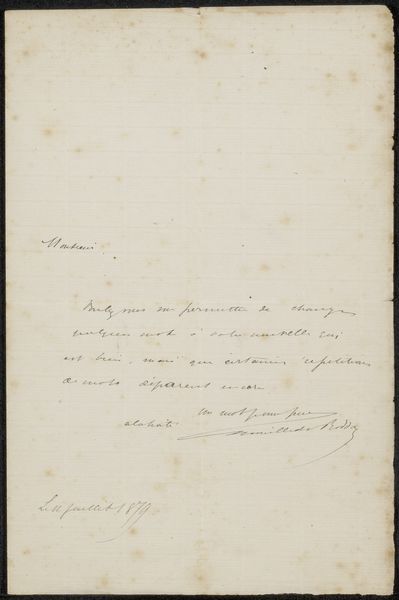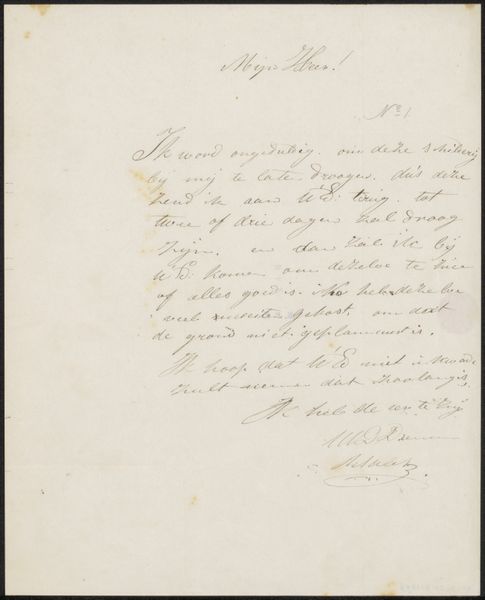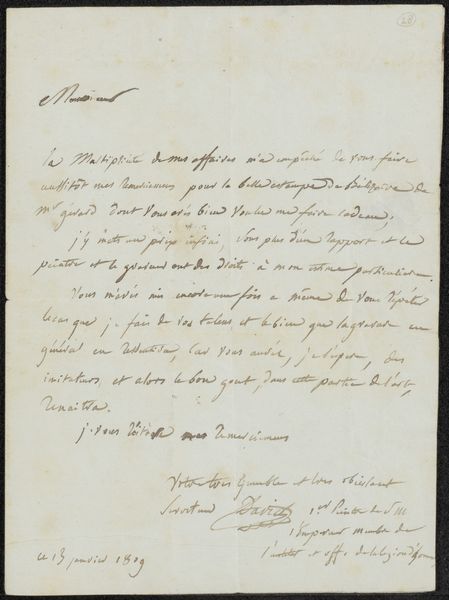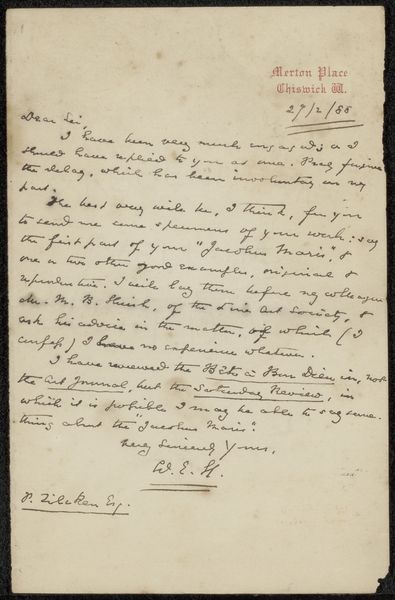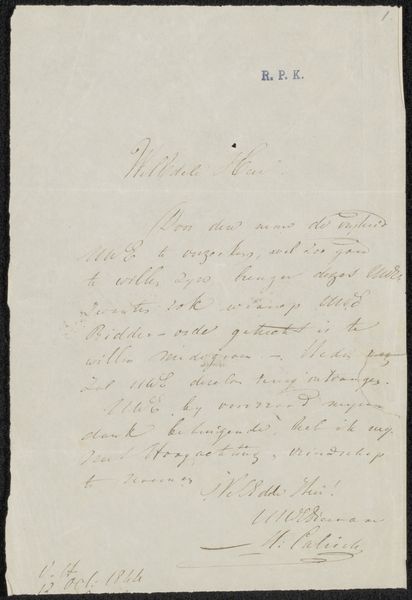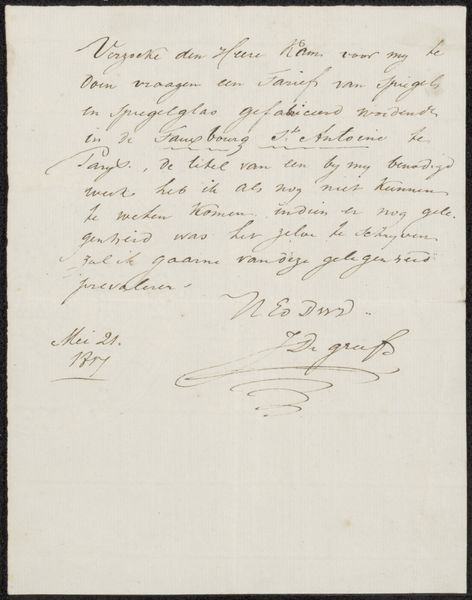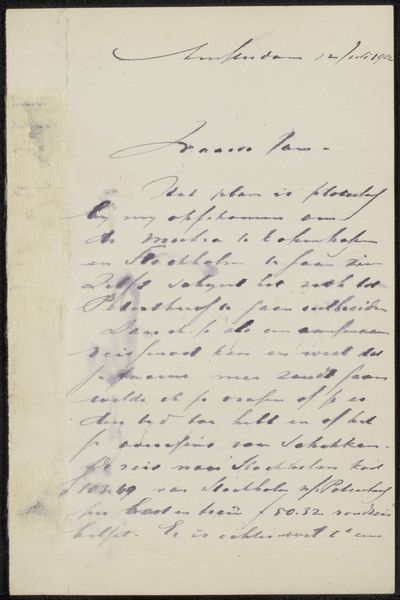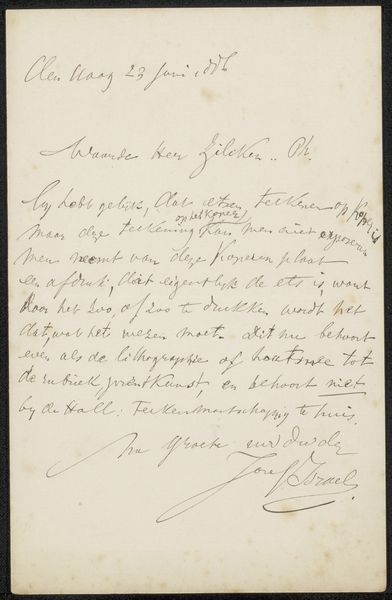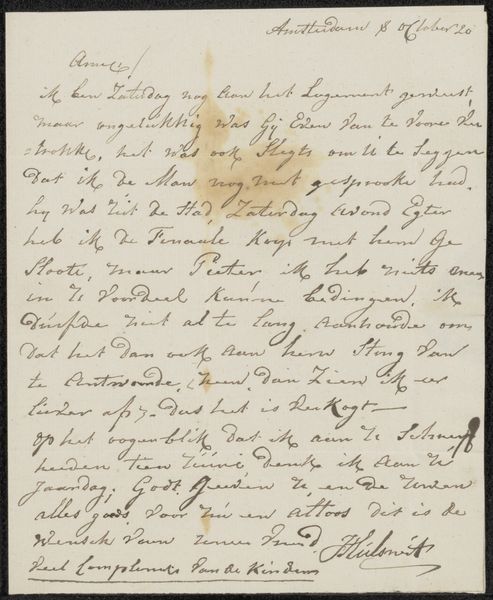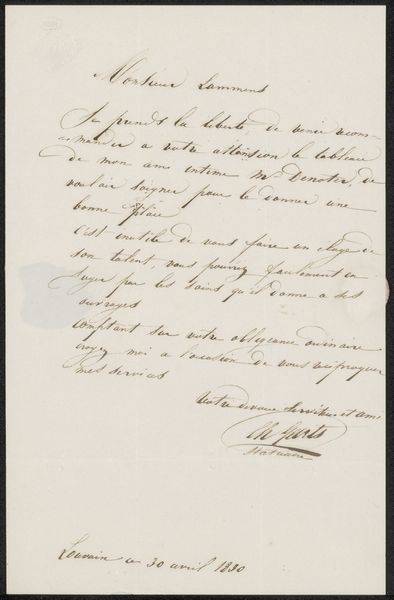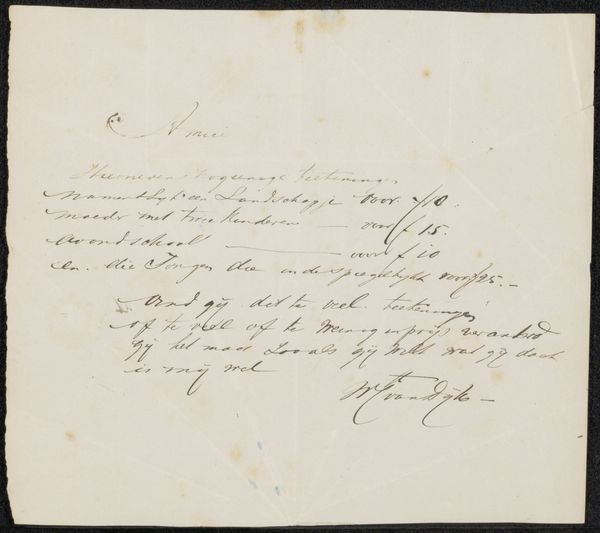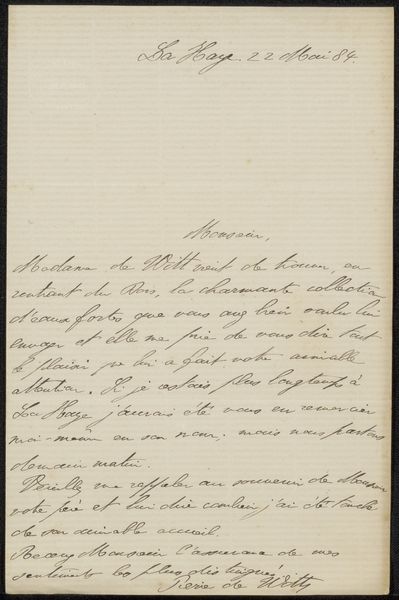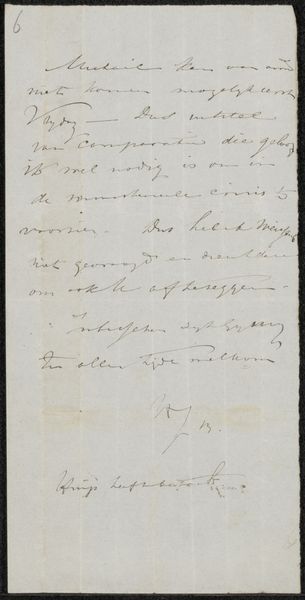
Copyright: Rijks Museum: Open Domain
Curator: This is "Brief aan Philip Zilcken," possibly from 1883, a pen and ink drawing by Jozef Israëls currently at the Rijksmuseum. Editor: It looks like an actual letter. It’s intriguing to see an artist's correspondence elevated to artwork status. What’s significant about the materials used, like pen and ink, in relation to the content itself? Curator: Well, consider the intimacy and accessibility of the medium. Pen and ink were everyday tools, means of communication and record-keeping accessible to many, and also used for artworks on paper. Its usage blurs the line between the practical, the personal, and the artistic. It highlights how the act of writing, the physical inscription, can itself become art. How does this emphasis on the material challenge the conventional idea of a romantic artist like Israëls? Editor: It makes me think about the labor involved, the repeated movements, the specific pressures applied to the pen to form each word. It's a very physical and almost performative creation. How does the social context of letter-writing in the 19th century add another layer of meaning? Curator: Exactly! The postal system, literacy rates, social networks… These factors governed who had access to these materials and means of communication. A letter implies a relationship, a sender and a receiver. This specific letter could shed light on Israëls’s professional or personal networks, revealing something about his position within the art world or even larger social circles. Editor: That makes me think about who Zilcken was and why Israëls chose to communicate in this way. Curator: Precisely! It directs our attention away from the lone genius stereotype towards a recognition of the interconnectedness of artistic production and reception, even today. It has given me some great insight, thank you! Editor: I completely agree! Seeing the artwork from this lens changes how one might interpret the meaning and making of this kind of work.
Comments
No comments
Be the first to comment and join the conversation on the ultimate creative platform.
